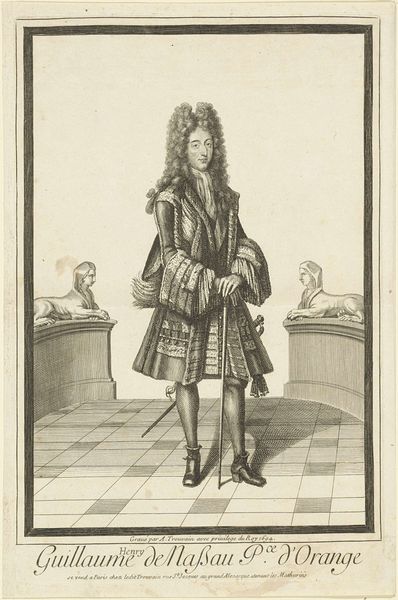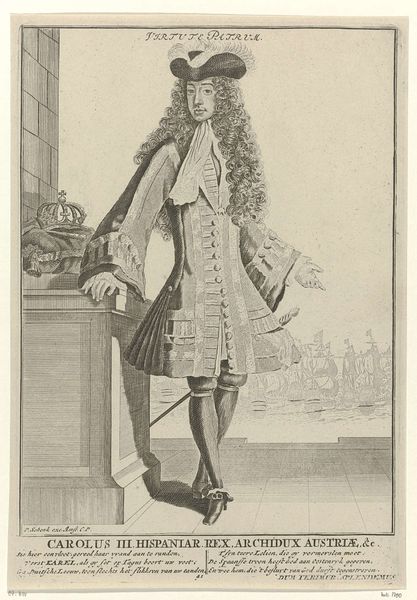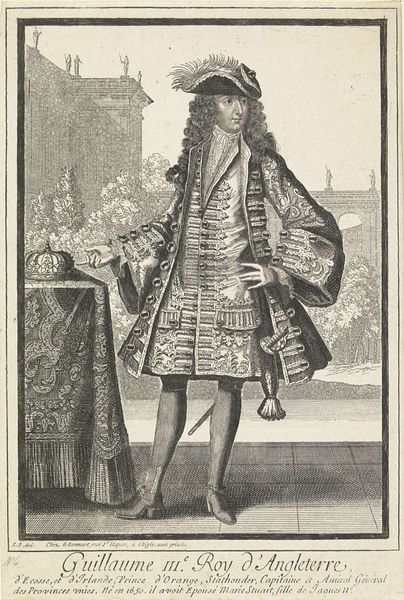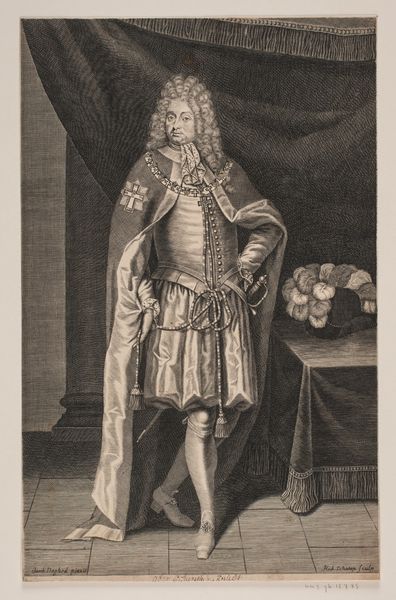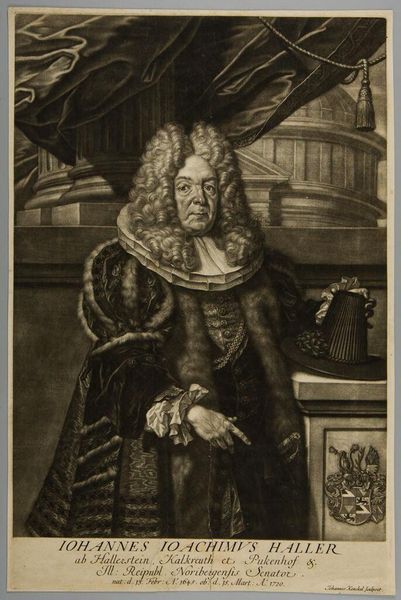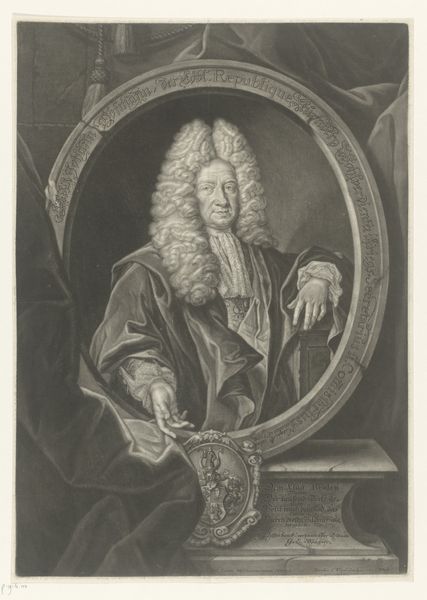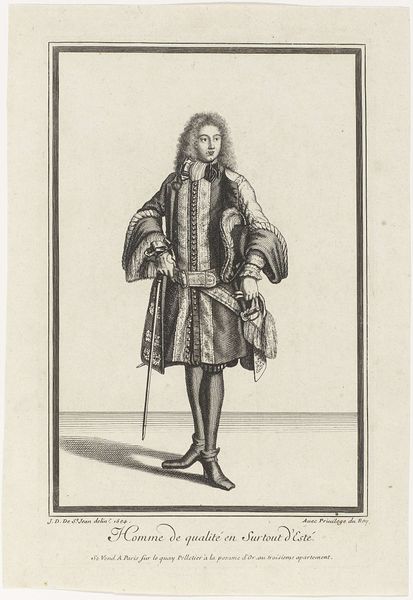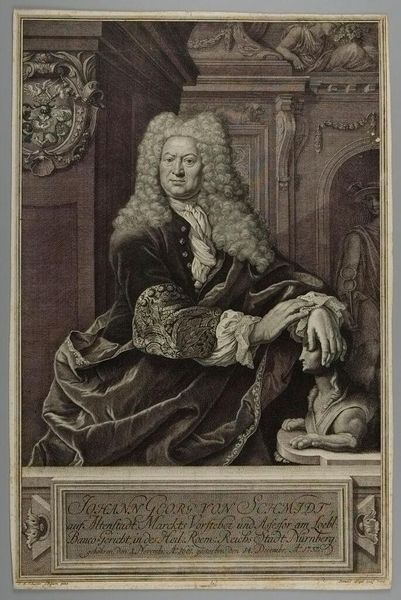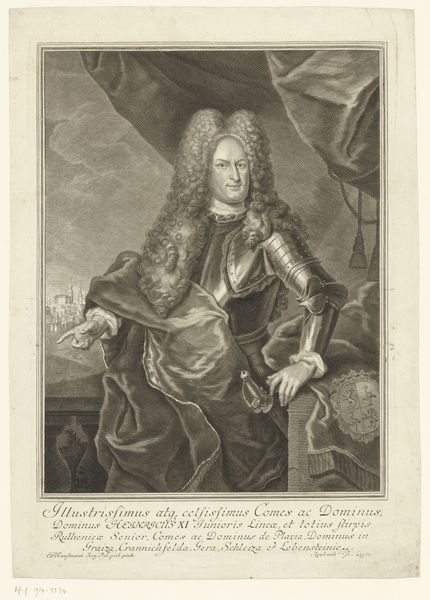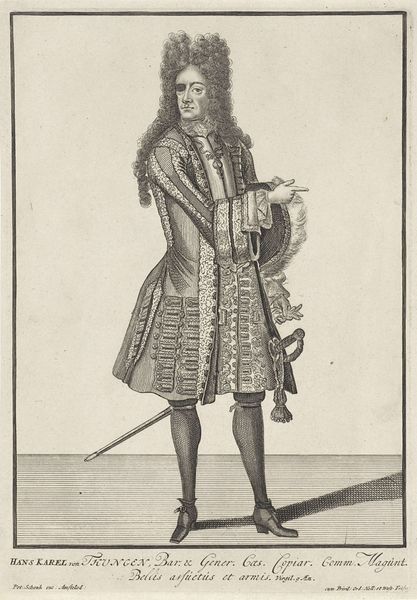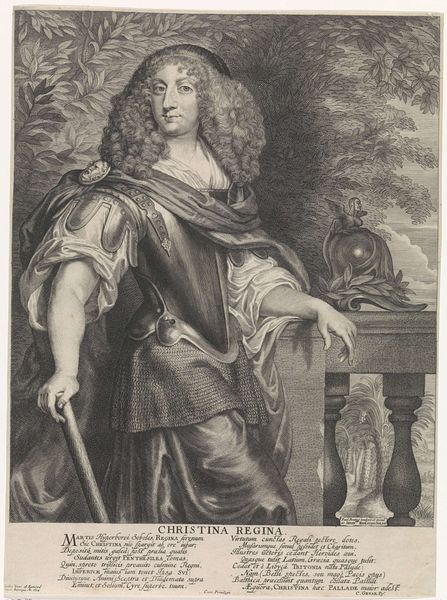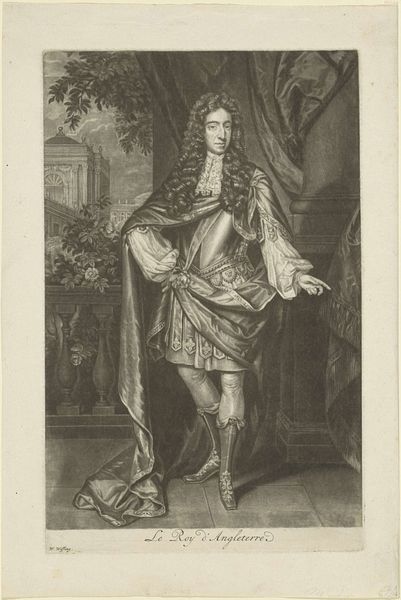
print, engraving
#
portrait
#
baroque
# print
#
history-painting
#
engraving
Dimensions: height 258 mm, width 175 mm
Copyright: Rijks Museum: Open Domain
Curator: Here we have a portrait of Frederick I of Prussia, dating from around 1675 to 1711. It's an engraving, so a print, which would have allowed for a wide distribution of this image of the king. Editor: He looks utterly bored! The intricate detail of the armor and the crown can’t hide the weariness in his face. I'd be weary too, wearing a wig that large! Curator: Yes, the scale of production for pieces such as these would rely on a well-structured workshop, and this would certainly speak to his role in the court. Editor: Speaking of roles, this image is pure Baroque theater, projecting power at a time of shifting European alliances. Look at how his hand rests so casually, yet strategically, upon the table near his crown. It’s a power play, signaling his authority while other leaders were fighting for prominence. What statements were meant to be broadcast about leadership? About what he and Prussia stood for? Curator: Indeed. Consider the material realities of disseminating such images. Prints like these became crucial tools for projecting an image of authority throughout Prussia and beyond. How many copies were made? Who distributed them, and to whom? It's a study in the materials of power! Editor: It’s also about the gaze. As a woman looking at this image, I see not just a king, but a constructed performance of masculinity, and, particularly, its effects. The portrait presents an idealized and undoubtedly exclusionary version of a male ruler in 17th and 18th century Prussia. This artwork operates in a long tradition of gendered imagery meant to consolidate patriarchal rule. Who benefitted from the construction of Frederick I in this way? Curator: Thinking about this in the round—and knowing that printmaking involves multiple skilled artisans working to very exacting parameters, all chosen carefully for Frederick’s political ends—the labor involved reflects this society. Where were these craftspeople positioned within this social hierarchy? Editor: And even the choice of the Baroque style, with all its flamboyance, speaks to Frederick’s desire to align himself with a particular vision of royalty. The style and its mass production made political messages readable and reproducible for a large audience. Curator: The intersections of art, labor, and power laid bare! Editor: Exactly! These artworks are complex social and cultural documents. What roles did society enable the construction of and promote in positions of power?
Comments
No comments
Be the first to comment and join the conversation on the ultimate creative platform.
